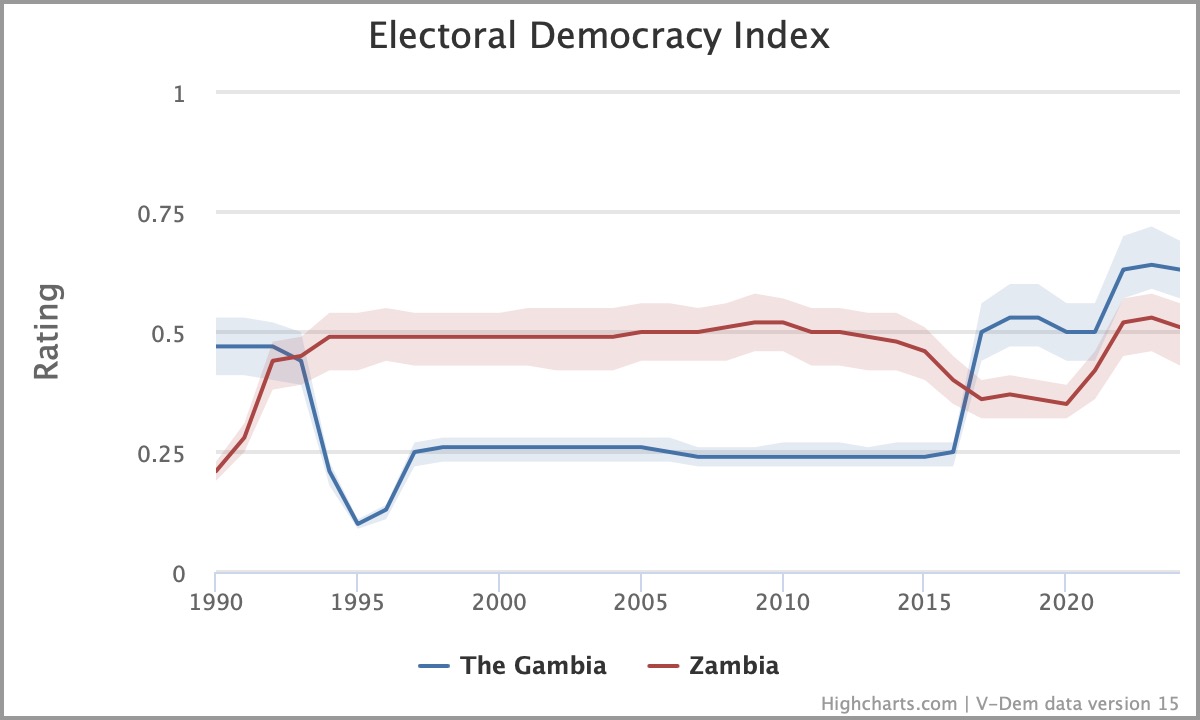Electoral Democracy in The Gambia and Zambia
By: Dina Ketteler
Oct 02, 2025
The Gambia and Zambia have both recently improved in the Electoral Democracy Index (EDI). This week’s graph shows their performance between 1990 and 2024.
The EDI focuses on the electoral components of democracy, assessing to what extent citizens are in control of choosing their leaders through free and fair elections, and whether there is freedom of expression and freedom of association during and between elections. The index ranges from 0 (less democratic) to 1 (more democratic).
In The Gambia, the 22-year authoritarian period under Yahya Jammeh, established through a military coup in 1994, ends in 2016 with the election of the opposition’s leader Adama Barrow. Barrow introduces governance reforms, like the TRRC commission that investigates the human rights abuses under Jammeh, and a security sector reform that reinforces the separation of powers.
Zambia has a period of middling but stable levels in the EDI from 1995 to 2015. After the death of President Michael Sata in 2015, Edgar Lungu steps in and wins the 2016 election. He introduces repressive measures against the opposition, the media, and civil society, leading to a decline in levels of democracy. In 2021, opposition leader Hakainde Hichilema defeats Lungu in the election with a landslide victory that initiates a U-turn democratization process. This case exemplifies the resilience of democracy, turning an autocratizing trend around.
Even though both countries are democratizing, the positive trend has been weakened in recent years by incidents of suppression of political opponents. The people of The Gambia and Zambia have the opportunity to solidify and deepen their ongoing democratization trends in the upcoming 2026 elections in the two countries.


